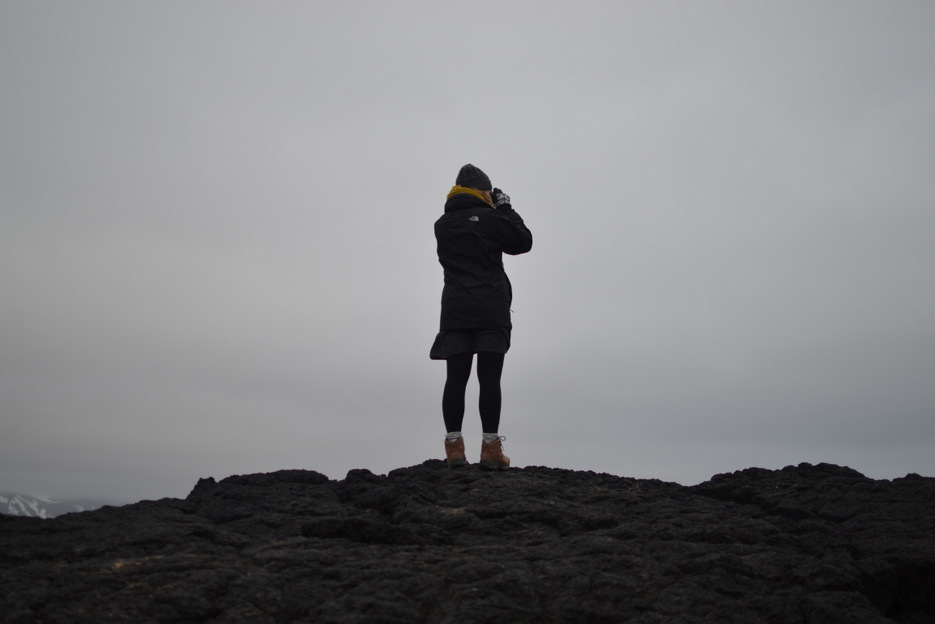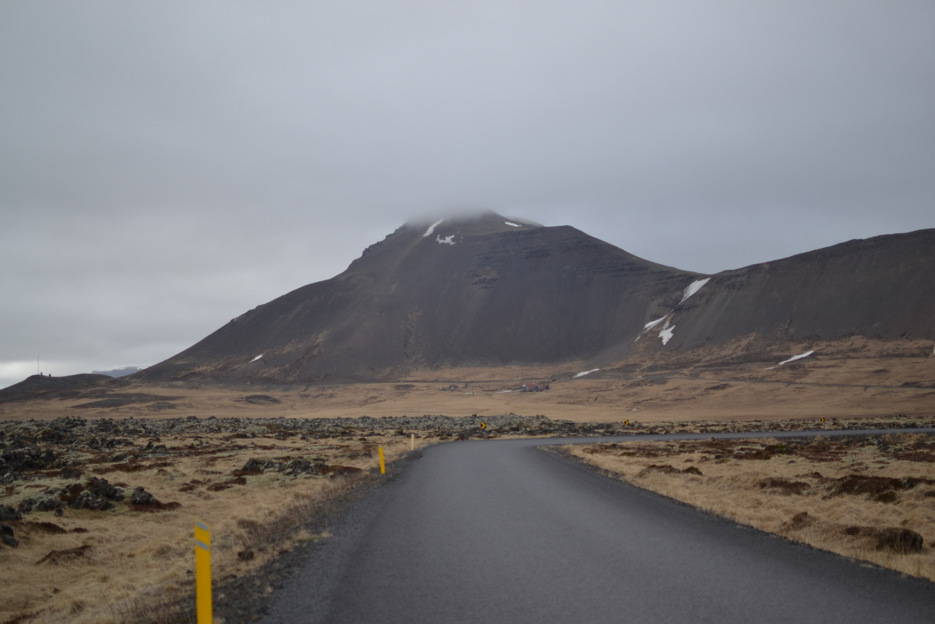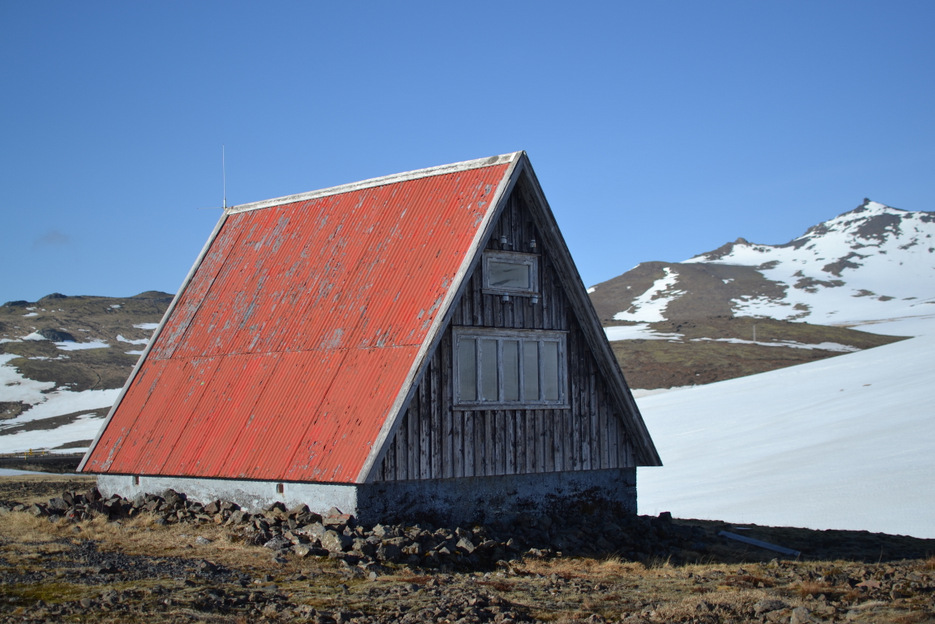This post is embarrassingly overdue I know but I wanted to record it here for posterity's sake and also in case anyone is heading to Iceland in the near future and might find it helpful! This is part 3 of our recent trip to Iceland (see here and here for parts 1 and 2) when we spent a few days exploring the (entirely unpronounceable but incredibly beautiful) Snaefellness peninsula, north of Rejkavík, on the western side of the island.


The journey from our cabin in Hvolsvöllur to the peninsula took about 4 hours at a fairly leisurely pace, although I'm sure you could do it quicker especially as the roads are so quiet. To get there from the south you have to pass through the Hvalfjörður tunnel, an incredible 3.6 mile underwater
tunnel that passes under the Hvalfjörður fjord. Now I'm not a big road/tunnel enthusiast normally, but that one was pretty amazing (and very dark obvs).

Our destination was the isolated Hotel Búðir, an inn and restaurant positioned on a slightly raised promontory looking out to sea, alone but for the tiny and picturesque black church which lies slightly beyond it.
The hotel sits on the edge of the Snæfellsjökull National Park, the first national park to be established in Iceland and is surrounded by richly coloured lava fields and snow-capped mountains. From the hotel you have a view of the brooding and ever present Snæfellsjökull glacier, a vast and imposing 700 000 year old volcano enclosed in thick glacier. 
The volcano is said by some to be one of the earth's seven great energy centres, and once you've seen it you can sort of understand why. It was also made famous because it formed the setting for Jules Vernes' sci fi novel Journey to the Centre of the Earth.

The hotel itself was simple and cosy - log fires flickering gently and filling the air with a warm, woody smell, comfy chairs and sofas in every corner, Icelandic wool blankets to borrow, a well stocked bar, a good library and telescopes for star gazing or watching the seals and birds across the bay. Our room was pared back but incredibly comfortable, with solid wood furniture, soft grey bed linen and beautiful little botanical paintings of local wildlife. Basically, complete heaven!
After a cup of tea by the fire and a little snooze to refresh ourselves after the journey, we headed out for an early evening explore before dinner.
We spent a lot of time just staring out to sea, marvelling at the muted majesty of it all, and watching the sea birds swoop and dive.
The black church is one of only 3 black churches in Iceland and is black because of the pitch used to protect it from the harsh elements. A church has stood on its spot since 1703 when Búðir was an important trading post. It is possible to get married there now - the hotel will organise it for you! Incredible wedding photos, no?!!
The hotel also has a wonderful and very popular restaurant serving interesting seasonal food in a cosy little dining room. It is a special occasion sort of place, and the food is quite expensive (think taster menu type place), but it was some of the best food we ate in Iceland and everything was presented and served with such love and attention that you couldn't help but enjoy it all.
Oh, and there is even has a little shop selling local handicrafts and cosmetics.
The following day was my 30th birthday! (told you it was a special occasion sort of place!) We woke to blinding sunshine and the most incredible views.
There was some obligatory present opening!
.........and an excessively large breakfast. And then out we went to explore!
Wepassed by the mighty Snæfellsjökull! I tried to channel some of its energy and wisdom for my thirties!
We decided to drive to the harbour town of Stykkishólmur on the northern side of the peninsula which we had read was a pretty place with a couple of nice restaurants for lunch.

We stopped at Djúpalónssandur beach on our way, which is an incredible place, once a busy fishing harbour and home to 60-70 boats, but now uninhabited. The beach is covered in smooth black pebbles like little pearls - absolutely beautiful.
On the beach there were 4 lifting stones historically used to measure the strength of fishermen. Fishermen had to be able to lift the second heaviest, the half-strength which weighs 54 kg before they were allowed to go to sea!
The beach also contains the rusty iron remains of the British trawler, the Epine GY7 which came aground east of nearby Dritvik on 13 March 1948.
We followed the winding road around the peninsula, through spectacular scenery. Vast stretches of water and rising mountains, flattened grass plains and sunlit meadows, waterfalls flowing from the rock and great swathes of purple-blue sea stretching out as far as the eye could see.

At Stykkishólmur we sought shelter from the rather ferocious wind and ate a cosy lunch of homemade fish soup at the warm and friendly Narfeyrarstofa with its green weatherboard and lace curtains.
After lunch we somewhat inadvertently stumbled across the Norwegian House, a striking black timber three storey house built in 1832 by wealthy local merchant Arli Thorlacius with timber imported from Norway. The second floor has been restored to how it would have been for Thorlacius and his family, and gives a fascinating insight into nineteenth century Icelandic life. The rest of the house serves as a folk museum and art gallery. When we visited there was a room dedicated to photographs of modern Icelandic shepherds and they were some of the most arresting and beautiful portraits I have ever seen.
We spent a quiet hour or so wandering around the rooms, the worn and weathered floorboards creaking underfoot, reading about each room and admiring the various objects and furnishings.


I particularly liked this lovely forest green cladding on the walls.

Later on we climbed up onto the headland and looked back at the town with its brightly coloured geometric houses and ice-capped mountain range, the sparkling sea and bobbing boats in the harbour.

It was so windy! We had to hold onto each other to avoid being swept away!
In the summer season you can take a ferry from Stykkishólmur across to the island of Flatey, renowned for its original nineteenth century houses and abundant bird life. I would love to do that one day, but the journey takes 6 hours so you would need a couple of days to do it justice. On our way back to Búðir, we took the mountain road which climbed up through still- thick snowy plains with the brightest blue skies above us.
On our way back to Búðir, we took the mountain road which climbed up through still- thick snowy plains with the brightest blue skies above us.
We passed this abandoned red-roofed cabin and thought about how incredible it would be to spend a night there.  On our way back to Búðir, we took the mountain road which climbed up through still- thick snowy plains with the brightest blue skies above us.
On our way back to Búðir, we took the mountain road which climbed up through still- thick snowy plains with the brightest blue skies above us.
Back at the hotel we celebrated with cocktails and dinner.
After dinner word went round that the Northern Lights might appear so we bundled ourselves up and headed out onto the beach. We wrapped blankets around ourselves and lay down on the grass with our eyes to the sky. And suddenly they appeared and we watched in wonder as they swirled and pulsated, changing from green to purple to pink, filling the whole sky with luminous colour. It was without a doubt the most incredible thing I have ever seen, and I can't imagine a more special or memorable way to spend my 30th.
The end!












































No comments:
Post a Comment